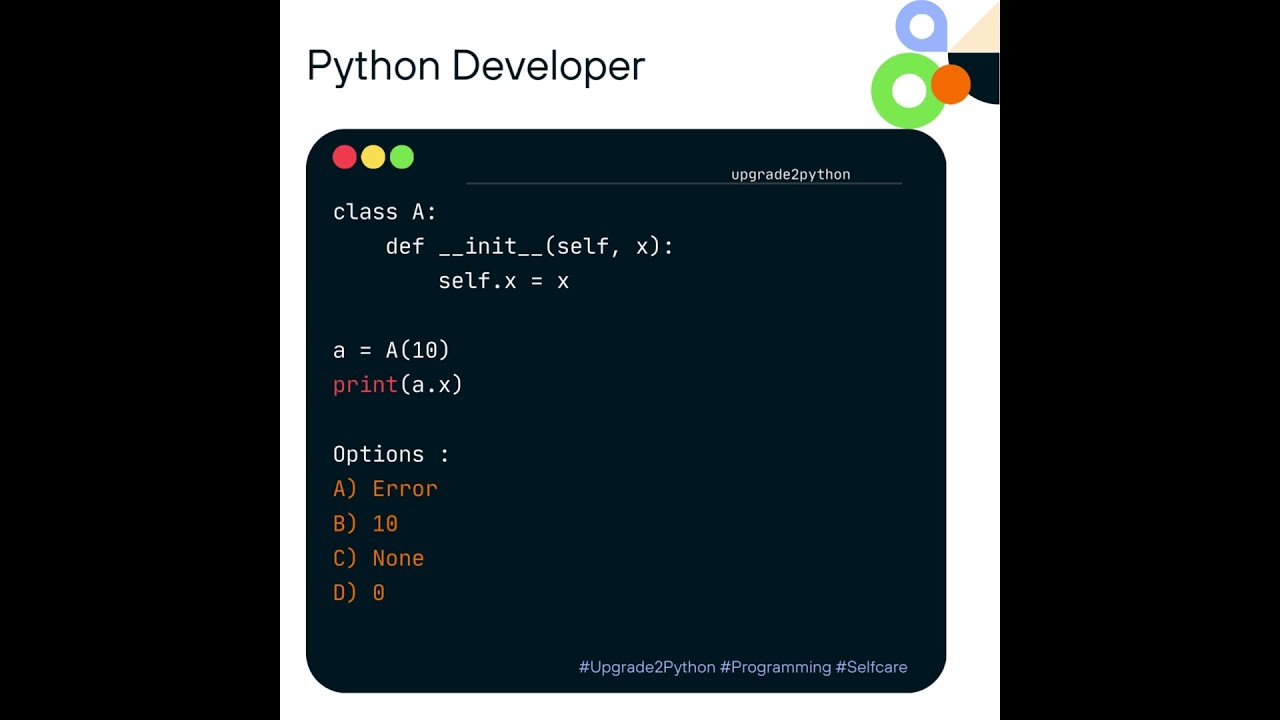“Welcome to Upgrade2Python, your go-to channel for mastering Python programming! Whether you’re a beginner taking your first steps into the world of coding or an experienced programmer looking to level up your skills, Upgrade2Python is here to help you succeed.
Join us as we explore the ins and outs of Python, from basic syntax to advanced techniques. Our tutorials are designed to be clear, concise, and easy to follow, making learning Python fun and accessible for everyone.
Stay tuned for regular updates and new content designed to help you upgrade your Python skills and reach your programming goals. Subscribe now and let’s upgrade to Python together!”
Music: Bensound.com/royalty-free-music
License code: TOTYG79JGPBKEMI3
python
class A: # Defines a class named ‘A’.
def __init__(self, x): # Special method called ‘__init__’ that initializes an instance of the class.
self.x = x # Sets an attribute ‘x’ of the instance to the value passed during instantiation.
a = A(10) # Creates an instance ‘a’ of the class ‘A’, passing the value 10 to the ‘__init__’ method.
print(a.x) # Prints the value of the attribute ‘x’ of the instance ‘a’.
Here’s a step-by-step explanation:
– `class A:` starts the definition of a class named `A`. Classes are blueprints for creating objects (instances).
– `def __init__(self, x):` defines the initializer method, `__init__`, which is automatically called when a new instance of the class is created. The `self` parameter refers to the instance itself.
– `self.x = x` assigns the value passed as `x` when the class instance is created to the instance attribute `x`. Instance attributes are values that are specific to a particular instance of a class.
– `a = A(10)` creates a new instance of the class `A`, passing `10` as the argument to the `__init__` method. This value is assigned to the instance attribute `x`.
– `print(a.x)` accesses the attribute `x` of the instance `a` and prints its value, which is `10`.
The output of the code will be:
10
This demonstrates how to define a class, create an instance, set instance attributes, and access them in Python.
This is because `my_func` (which is `inner_func`) prints the value of `x` that was captured during the execution of `outer_func`.
#google #googleinterview #googleplay #microsoft #microsoftinterview
#jpmorgan #jp #python #Upgrade2Python #upgrade2python #facebook #facebookreels #upgrade2python #facebookreels #pythontutorial




コメント